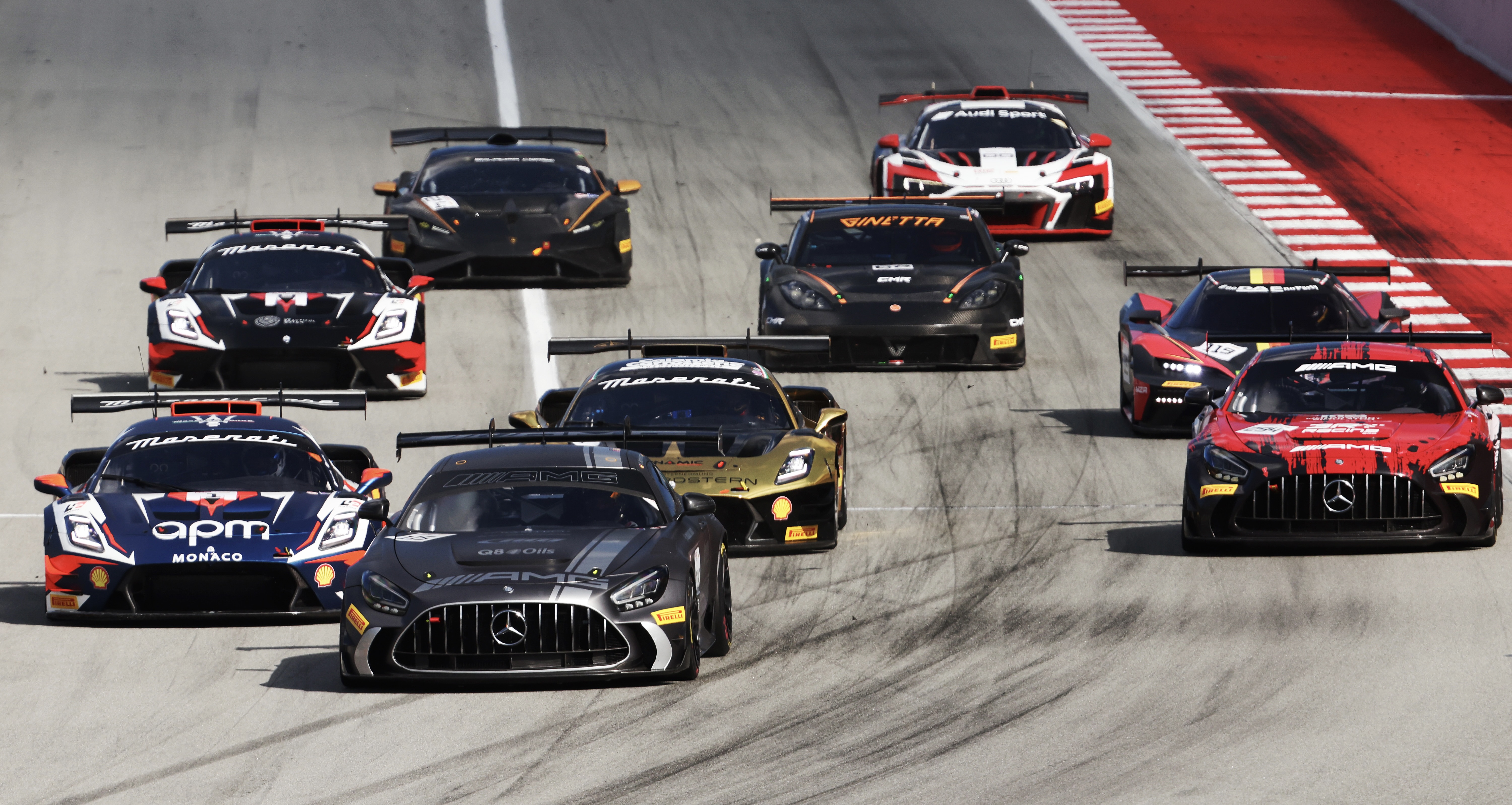• Significant evolutions planned for sixth season of GT2 Europe
• GT Academy introduced to create pathway for talented young drivers
• Revised calendar and class structure among further changes for 2026
The GT2 European Series powered by Pirelli has opened the entry process for its much-anticipated 2026 season, which will feature several innovations aimed at creating a thriving and competitive grid.
The most significant development is the launch of GT Academy. Open to all Silver-graded drivers under the age of 30 who compete with Maserati, Mercedes-AMG or Ginetta GT2 machinery, the winner will receive a fully funded (excluding crash damage) GT World Challenge Europe Endurance Cup seat with a leading Mercedes-AMG Customer Racing Team in 2027.
The prize represents a once-in-a-lifetime opportunity for aspiring professionals and will be judged on criteria such as fastest qualifying laps and average stint times, while excluding external factors such as co-driver performance, reliability and luck. Additional manufacturers are set to join the programme ahead of the new season, thereby making their drivers eligible for GT Academy.

A further evolution will see the series adopt a more efficient five-round calendar, beginning on the final weekend of May and concluding in October. Four events will run alongside GT World Challenge Europe powered by AWS, while the other joins a packed schedule at Spa Speedweek, which takes place just a few days before the world-famous CrowdStrike 24 Hours of Spa.
Changes to the class structure and driver line-ups have also been introduced with the aim of creating more opportunities for competition. Beginning in 2026, a distinction will be made between two types of Bronze-graded driver, with those that satisfy one or more of SRO’s extensive criteria categorised as Bronze Plus. This will typically apply to drivers aged under 40, while past racing experience and a recent downgrade from Silver will also be taken into consideration.
Just as significant is the class structure, which will be changed for the first time since GT2 Europe launched in 2021. A new Silver class will be introduced next term, giving GT Academy hopefuls a perfect opportunity to compete wheel-to-wheel and demonstrate their skills. This will be open to two-driver crews and solo Silver drivers, with the latter restricted to one free practice session at each event.
The Pro-Am class, which has formed the backbone of GT2 Europe since its inception, remains largely unchanged. An amateur driver (FIA Bronze or SRO Bronze Plus) will share with a professional (up to FIA Silver for a Bronze Plus, or FIA Gold for a Bronze). Silver drivers who meet the GT Academy criteria will be able to compete for the prize on an equal footing thanks to the programme's performance-focussed judging.
Previously known as Am, the renamed Masters class will retain its focus on amateur competitors. It will be open to both solo and two-driver crews comprising Bronze and/or Bronze Plus entrants, with a scale of handicap weight applied for the latter. As ever, each class will be a separate entity with its own podium after every race and titles up for grabs at the end of the season.

The weekend format will change slightly next year with a return to the 50-minute race format used between 2021 and 2024. Each event will also feature a pair of 15-minute qualifying sessions and two 60-minute free practice sessions, bringing the total track time to more than four hours. No limits are placed on private testing outside championship rounds.
At present, no fewer than eight major automotive manufacturers have cars eligible for GT2 Europe competition, with machinery available from Audi, Brabham, Ginetta, KTM, Lamborghini, Maserati, Mercedes-AMG and Porsche. Interested parties should contact Caroline Azema: caroline.azema@sro-motorsports.com. For more information on GT Academy, please click here.

